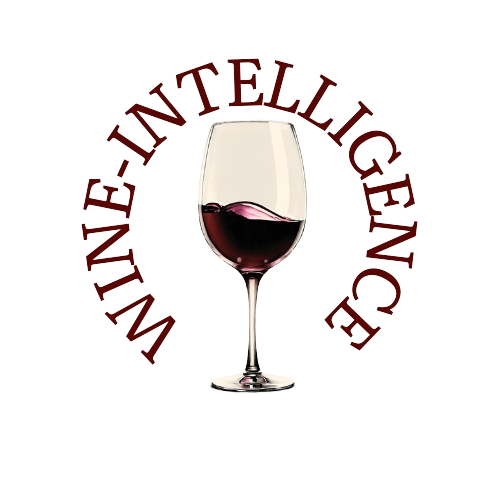The wine and spirits industry finds itself at a crossroads. In the face of changing consumer behavior, economic pressures, and the rise of emerging markets, the need for transformation has never been more urgent.
This is the core message from Circana, a leading market research and analysis company, which recently shared its strategic recommendations at Wine Paris 2025. According to Circana, the future of wine and spirits lies in reinvention—leveraging high-growth segments like low- and zero-alcohol beverages, functional drinks, and premium experiences, all while using advanced analytics to improve demand forecasting and buyer engagement.
The Changing Landscape: From Volume Decline to Value Growth
Ananda Roy, SVP of Thought Leadership Europe and CPG Growth Advisor at Circana, presented data that sheds light on the current state of the alcoholic beverage market in Europe. As of 2025, the alcoholic beverage market in the six largest EU countries is valued at EUR 69 billion, accounting for 43% of all beverage sales. However, Roy pointed out a troubling trend: a decline in sales volumes of -1.1%, with wines dropping by 1.9% and spirits by 4.4%. Despite inflation-driven value growth, the demand for traditional alcoholic beverages remains weak, highlighting the need for the industry to adapt.
“The reality is that while alcohol sales are declining, there’s an increasing demand for premium products and ‘experiential’ beverages—those that can bring the ‘out of home’ experience into the home,” said Roy. “Consumers no longer just want a drink; they want an experience that aligns with their values: health, sustainability, and authenticity.”
Premiumisation and the Shift Toward Experiences
The concept of premiumisation is emerging as a powerful growth driver in the industry. With consumers looking for more than just a drink, the desire for products that offer sensory experiences, paired with a sense of personal fulfillment, is rising. These consumers seek products that fit their values, such as sustainable sourcing, health-conscious formulations, and premium quality. This is reshaping the entire drinking experience, and producers must adapt to these evolving demands.
Innovative formats are central to this shift. While some products, like canned wines and bag-in-box formats, were once considered unconventional, they have now found a market as part of a broader trend toward convenience, sustainability, and affordable luxury.
Roy emphasized, “Innovation is not just about creating new products. It’s about rethinking how we interact with consumers and integrating sustainability into the core of our brands.” This means embracing new approaches that make wine and spirits ‘cool’ again—brands that can do this will be poised for long-term success.
Changing Consumer Behavior: The Generational Divide
One of the most striking shifts highlighted by Circana’s research is the generational change in drinking habits. Younger consumers, especially those between the ages of 25 and 35, are significantly altering the market landscape. Nearly a quarter of this demographic has stopped purchasing alcoholic beverages, while 13% have delayed their purchases. This change is largely driven by health concerns, economic pressures, and a growing preference for innovative, functional drinks that offer more than traditional alcohol.
Roy noted, “The demand for non-alcoholic and low-alcohol options is not a trend; it’s already a reality. We must take this seriously and be prepared to innovate in response.”
The rise of functional beverages, such as plant-based drinks, protein-enriched options, and mood-enhancing soft drinks, is another example of the ongoing transformation in consumer preferences. These beverages are increasingly seen as substitutes for traditional alcoholic drinks, especially among younger, more active consumers.
Sustainability and Retail Partnerships: A New Era of Collaboration
Another area in which Circana sees growth is sustainability. According to the company’s findings, 98% of European retailers are committed to sustainable sourcing, which presents an opportunity for wine and spirits producers to align their brands with these values. However, challenges remain, particularly around affordability and availability. For sustainability to drive growth, the industry must make these products more accessible to a broader range of consumers.
Circana also stressed the importance of strengthening retail partnerships. “Retailers are key players in the future of this industry,” Roy explained. “Aligning with their sustainability initiatives and collaborating on innovative solutions in segments like ready-to-drink (RTD) spirits will help the sector stay relevant.” This collaboration is crucial for responding to consumer demand for products that are both sustainable and affordable.
The Role of Social Media and Dynamic Marketing Strategies
As the market becomes more fragmented, traditional marketing strategies are no longer sufficient. To capture the attention of today’s time-poor, social-media-driven audience, brands must move towards dynamic marketing strategies that embrace the power of digital platforms. Social media and influencer engagement have become essential tools for reaching consumers, especially younger generations who are highly active online.
Roy highlighted that “Social media is no longer optional for wine and spirits brands. It is a vital channel for building engagement, telling brand stories, and creating a direct connection with the consumer.” This shift represents a move from static marketing approaches to agile, responsive strategies that allow brands to stay in tune with emerging trends and consumer preferences in real time.
The Road Ahead: Innovation and Market Adaptation
Innovation remains the driving force behind the transformation of the wine and spirits industry. Circana’s data shows that non-alcoholic beverages are leading the charge, with consumers increasingly seeking healthier alternatives to traditional alcoholic drinks. In addition, private-label beverages are gaining ground by offering innovative products without sacrificing quality, often at more competitive price points.
Roy concluded, “This is a time of great change. We are witnessing the rise of no- and low-alcohol wines as well as new functional drinks. Regulations are becoming stricter, and taxation systems are evolving. The wine sector must be open-minded to seize the opportunities that exist.”
For wine and spirits producers, the path forward is clear: innovation, sustainability, and a strong connection with evolving consumer preferences are the keys to staying competitive in an ever-changing market. By embracing these principles, producers can not only survive but thrive in the rapidly shifting landscape of the wine and spirits industry.
Source: WineNews

